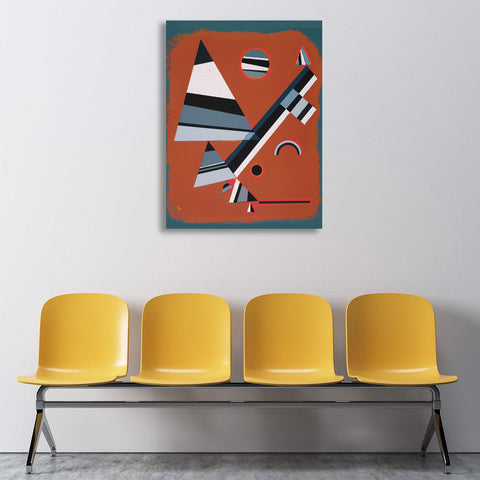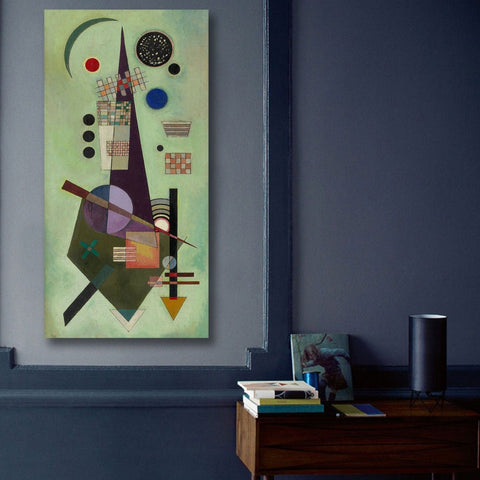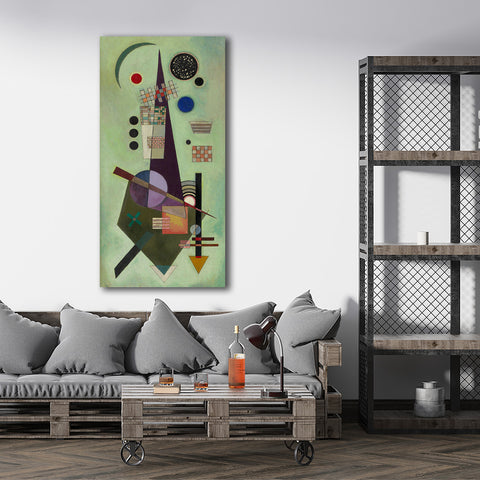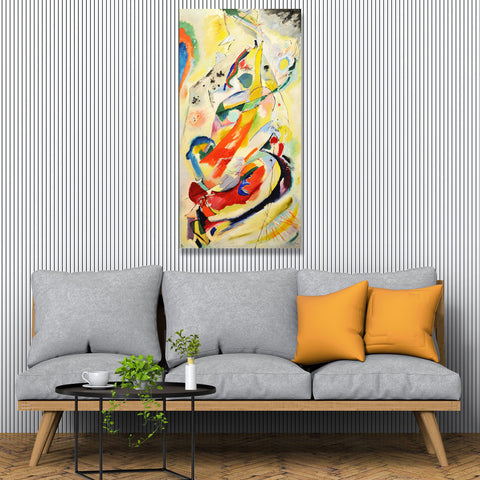Wassily KANDINSKY

Wassily KANDINSKY, Self-portrait.
Russian painter Wassily KANDINSKY (1866 – 1944) pioneered abstract art in the late 19th and early 20th centuries. His unique perspective on the form and function of art emphasized the synthesis of the visual and the auditory. He heard sounds as color, and this unusual perception was a guiding force in the development of his artistic style.
Born in Moscow, Kandinsky spent his childhood in Odessa, where he graduated from Grekov Odessa Art School. He enrolled at the University of Moscow, studying law and economics. Kandinsky began painting studies (life-drawing, sketching, and anatomy) at the age of 30. In 1896 Kandinsky settled in Munich, studying first at Anton Abe's private school and then at the Academy of Fine Arts. He returned to Moscow in 1914, after the outbreak of World War I. Kandinsky was unsympathetic to the official theories on art in Communist Moscow and returned to Germany in 1921. There, he taught at the Bauhaus school of art and architecture from 1922 until the Nazis closed it in 1933. He then moved to France, where he lived for the rest of his life, becoming a French citizen in 1939. He died at Neuilly-sur-Seine France in 1944.
His unique works printed on the metal surfaces have a very modern look and can make an amazing focal point in any interior.

Wassily KANDINSKY, Self-portrait.
Russian painter Wassily KANDINSKY (1866 – 1944) pioneered abstract art in the late 19th and early 20th centuries. His unique perspective on the form and function of art emphasized the synthesis of the visual and the auditory. He heard sounds as color, and this unusual perception was a guiding force in the development of his artistic style.
Born in Moscow, Kandinsky spent his childhood in Odessa, where he graduated from Grekov Odessa Art School. He enrolled at the University of Moscow, studying law and economics. Kandinsky began painting studies (life-drawing, sketching, and anatomy) at the age of 30. In 1896 Kandinsky settled in Munich, studying first at Anton Abe's private school and then at the Academy of Fine Arts. He returned to Moscow in 1914, after the outbreak of World War I. Kandinsky was unsympathetic to the official theories on art in Communist Moscow and returned to Germany in 1921. There, he taught at the Bauhaus school of art and architecture from 1922 until the Nazis closed it in 1933. He then moved to France, where he lived for the rest of his life, becoming a French citizen in 1939. He died at Neuilly-sur-Seine France in 1944.
His unique works printed on the metal surfaces have a very modern look and can make an amazing focal point in any interior.







